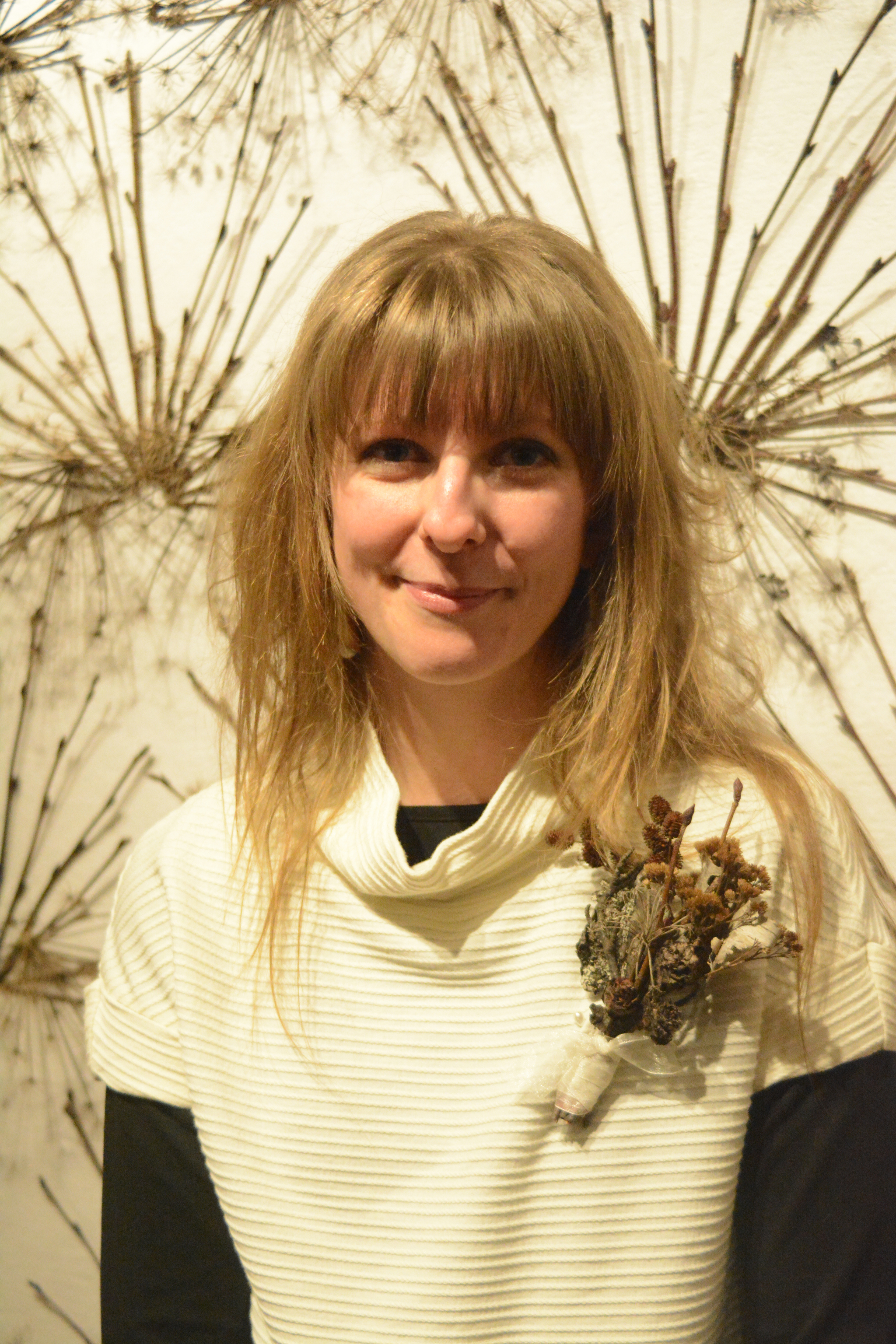At some of Bunnell Street Arts Center’s Artist in Residency programs, artists use the space as a working studio, with the gallery walls secondary to the creative experience. For a residency last year with paper artist Desiree Hagen and last month with Mandy Bernard, the experience could be called, “Wreck this gallery.”
Well, the artists didn’t take sledgehammers to sheetrock, but at a First Friday artist talk this month, Bernard mentioned how many fasteners she used to create her installation.
“I went through half a box of staple guns, two sleeves of staple gun brads, two-and-a-half pounds of panel nails, two boxes of sewing pins and two boxes of u tacks. There’s a decent amount of hardware,” she said, adding that when the show closed, she could use some volunteers to repair holes in the walls.
Both Hagen and Bernard are local artists working in residency but not actually staying at the gallery. They both used the Bunnell gallery space of four walls and two windowed walls to examine their connection to space. Hagen used the media of cut paper in a more realistic rendition, while Bernard’s show, The Patterns of Place, takes an abstract approach.
Using found natural materials like beach rocks, birch and cottonwood bark, alder branches, willow roses and pushki, Bernard used the canvas of the gallery walls and assembled the natural objects into mostly repetitive patterns. The show explodes on the macro scale a fascination with patterns she explores in her textile art.
Primarily a printer, illustrator and textile artist, Bernard uses inspiration from nature to create her designs, sold locally under her company, Homestead Roasters.
“I often repeat these elements of Alaska’s wild landscape through pattern, reflecting my desire for permanence and continuity in the natural world,” she writes in her artist’s statement.
In her show, she takes those objects and places them directly on the wall.
“I wanted to take some of the things from outside and bring them in,” she said. “I was doing a lot of reflection on my time here and all these different places that we live. They’re all different, but there are some patterns and repeating themes of how you connect to any given place.”
Bernard also used her residency to mark the sixth anniversary of her time in Homer, which fell on Jan. 28.
When she first moved to Homer, she said she got to thinking, “How do you transition from a geography to your home in your community and how does that happen. A lot of what made me get to know this community was learning what plants do we have here, what natural things are around us.”
Originally she had the idea of collecting objects from places that had meaning to her, like the Homer Public Library, where she first made friends, or her property.
“I quickly learned that wasn’t going to happen or be feasible,” she said at her artist’s talk. “It actually took quite a lot of material to pull together the installation. It came from all over.”
Bernard collected bark from sawmills and woodpiles. In community art workshops, she invited people to help her collect materials and explore the idea of patterns in nature. One day she came to the gallery and found a woman and her children had gone out into the snow and brought back a sled filled with spruce cones and pushki, or cow parsnips, stalks. A peculiar plant artifact, willow roses, fascinated her. An insect burrows into the willow and makes its nest, called a gall.
Working with Rachel Lord at Alaska Stems, Bernard said when she first saw willow roses she thought them beautiful and would make great boutonnières until Lord explained what they were. At her opening, though, Bernard wore a willow rose like a corsage.
As she worked on her installation last month, Bernard collected all the objects into boxes. She meticulously glued nails on the backs of rocks and then predrilled holes into walls to hang them. If some artists find pleasure in the smells or their paints or inks, Bernard found it in the smells of the objects she collected.
“The cottonwood bark in particular smells like Alaska to me. I enjoyed coming into this space,” she said. “You could come in on different days and it would smell a little bit like a forest in here.”
True to her illustration roots, Bernard’s show also includes some silkscreen prints on paper.
“I wanted to maintain an element of printmaking,” she said “There are prints on the wall that I couldn’t help but arrange in some sort of pattern over there.”
Bernard said the experience of her residency didn’t change the way she thinks about patterns, but it did open up how she looks at them.
“It has me working at a larger scale in this, three dimensional. It was really fun and really exciting,” she said. “It will help me think more about sculpture. That’s not a direction I would have gone on my own.”
Michael Armstrong can be reached at michael.armstrong@homernews.com


